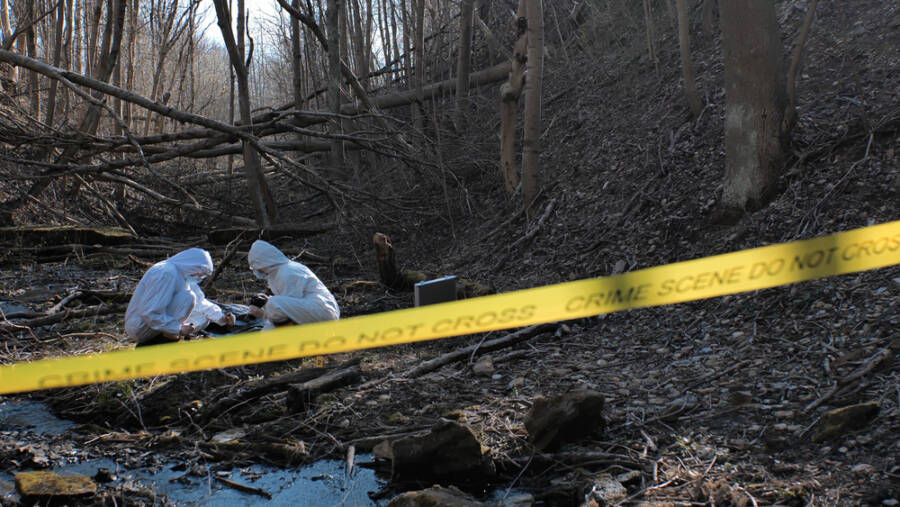Nuclear disasters are the worsts things that can happen to humankind!
As bad as it is to say it out loud, we have to keep things real and admit that we live in a world where we can never be sure what will happen next. Who would have guessed that we’d have to watch a war with guns, tanks, and bombs unfold in front of our eyes while living in fear that everything will end with a nuclear bomb that will destroy everything?
Experts say that nuclear disasters often have thousands of years of repercussions. For instance, it’s predicted that no one will live in the Chornobyl area for the next 20,000 years, which is an eternity if you ask us.
Believe it or not, 5.7% of the world’s energy and 13% of the world’s electricity come from nuclear power plants, despite the obvious risks involved.
Given the fact that there are 437 nuclear power plants throughout the globe, accidents are inevitable. Minor problems happen often and are usually easy to fix, but significant disasters can have effects that last for a long time.
The severity of nuclear disasters is measured against the International Nuclear Event Scale (INES). We wanted to know more about the massive consequences an incident like this can cause, so we did our research and came up with a list of the 10 most dangerous nuclear catastrophes in history. Here they are:

10. Tokaimura, Japan, 1999 – Level 4
2 significant nuclear accidents happened in Japan in 1999. The first one happened on March 11 at the PNC radioactive waste bituminization facility when an experimental batch of solidified nuclear waste caught fire.
More than 20 people were affected by the radiation, but the more severe accident happened a few months later, on September 30th of the same year. The nuclear disaster emerged when 2 workers decided to disobey the rules and put more enriched uranium in a tank than they were actually allowed to.
Radiation exposure occurred to 667 people during the incident’s roughly 20-hour duration, and 2 workers died as a direct consequence. Experts classified this nuclear disaster as being Level 4, which means that it only had local consequences. Speaking of that, people who were living within 1,000 feet of the location where the incident took place were quickly evacuated.
9. Saint Laurent des Eaux, France, 1980 – level 4
One of the worst things France has ever faced was the Level 4 nuclear disaster that took place in 1980 in the city of Saint Laurent des Eaux. The whole thing occurred at the nuclear power station in Loir-et-Cher on the Loire River.
In March of 1980, the Saint Laurent A2 reactor had a cooling system failure, which led to the melting of one fuel channel. There was no radioactive material discharged into the environment, so the accident was classified as Level 4 on the International Nuclear and Radiological Event Scale (INES).
…Have you ever heard about this? Now we move on to more dangerous events that are classified as Level 5 on the INES scale.
8. L-1 Experimental Power Station, Idaho, United States, 1961 – Level 4
On January 3, 1961, 3 people were killed when a steam explosion and subsequent meltdown occurred in a nuclear power reactor being used as part of an experiment by the United States Army.
The control rod, which is responsible for absorbing neutrons in the reactor core, was removed incorrectly, causing the incident. This is the first deadly reactor accident that has ever occurred in the United States, but it isn’t the only one. Moreover, an estimated 80 curies of iodine-131 were discharged.
7. Goiânia, Brazil, 1987 – Level 5
The higher the level established by the INES is, the bigger the catastrophic consequences are. In September 1987, Brazil and its people were shocked when a radioactive cesium-137 source got out of its container in an old hospital in Goiânia that was no longer in use.
In conformity with the International Atomic Energy Agency, it was one of the world’s deadliest radiation events, and it was rated as an INES Level 5 mishap. This nuclear disaster caused severe contamination to spread across the community.
Unfortunately, the radiation attack resulted in the deaths of 4 people and radiation burns for another 28 victims. Many of the buildings in the city were demolished, and the broad areas needed intensive operations for dirt removal.
6. Chalk River, Canada, 1952 – Level 5
In December 1952, the core of the National Research Experimental (NRX) reactor at Chalk River Laboratories was damaged due to a meltdown caused by a power excursion and a partial loss of coolant in the reactor. Many experts consider that this was one of the world’s most significant reactor accidents.
The Chalk River nuclear disaster was an incident of INES Level 5 severity. The reactor was back in action in less than 2 years and remained so until its final shutdown in 1993.

5. Windscale Pile, United Kingdom, 1957 – Level 5
In October 1957, a fire broke out in Unit 1 graphite-core reactor at Windscale Pile in the United Kingdom, causing the worst nuclear disaster in British history.
The incident resulted in the discharge of radioactive elements into the environment and was rated as an INES Level 5 occurrence. It is thought that the radiation could have caused about 240 cases of cancer.
The reactor’s fuel cartridges were taken out, and the exit air ducts were shut down due to this nuclear disaster. Even though it was not harmed by the fire, the second reactor at the site was also shut down. After extensive cleaning, the site’s former name was changed to Sellafield for a part of the complex.
4. Three Mile Island, United States of America, 1979 – Level 5
The worst catastrophe in American history occurred in March 1979, when Unit 2 (TMI-2) of the Three Mile Island nuclear power station partially melted down. An INES Level 5 was assigned to the incident, which means that there were some wider consequences to this whole tragic incident.
The partial core meltdown of one of the site’s 2 reactors was caused by a combination of secondary system failures and human error at the facility. Despite the release of radioactive substances into the atmosphere, no discernible effects on the health of operating employees or the general public were discovered, which is a good thing.
3. Kyshtym, Russia, 1957 – Level 6
In September 1957, the Kyshtym nuclear energy plant in the Russian city of Ozyorsk, which is not far from the town of Kyshtym, was the victim of a nuclear disaster. In conformity with the INES scale, this was a Level 6 occurrence.
The explosion, equal to 70–100 tons of TNT, was triggered by a breakdown of the cooling system in one of the tanks holding liquid radioactive waste.
The amount of radioactive material emitted into the air was estimated to be around 20 MCi (or 800 PBq). Moreover, at least 22 communities with a total population of around 10,000 were reportedly evacuated.
2. Fukushima Daiichi, Japan, 2011 – Level 7
In March 2011, there were some massive tsunamis triggered by the Tohoku earthquake, which were the direct cause of the Fukushima Daiichi nuclear tragedy. This nuclear disaster is one of the worst events that ever happened to humankind, with an INES Level 7.
The tsunami waves obliterated all of the backup generators and safety systems, except for a single diesel generator in Unit 6. As a consequence, 3 reactors had meltdowns due to insufficient cooling of their cores.
After that, plenty of radioactive elements were spilled, polluting the area. Hydrogen explosions at the plant caused severe damage to the concrete exterior structure and prompted the evacuation of residents within a 20-kilometer radius. What’s good about this is that there were no fatalities reported as a result of radiation exposure.
1. Chernobyl, Ukraine (USSR), 1986 – Level 7
The most popular nuclear disaster in the world was the one that took place at Chernobyl, Ukraine (USSR), in 1986 and had massive consequences.
The accident happened during a safety test meant to see how well the RBMK-type nuclear reactor’s emergency feedwater pumps could work without power from the outside and after a big leak of coolant.
Some sources say that this nuclear disaster actually happened because people who were working with the reactor design were not prepared and trained for a job like that.
The International Atomic Energy Agency (IAEA) assigned a score of 7 on its IINES scale. More than 500,000 people helped during the first emergency response and subsequent environmental cleaning, and it cost an estimated 18 billion roubles (about US$68 billion in 2019 dollars).
Radiation was spilled into the atmosphere across a large portion of Europe, killing 31 people and afflicting many more with radiation sickness. There were more than 500,000 people working to contain the pollution and prevent a catastrophe, and the consequences were significant and devastating.
…Do you want to know more about the things that happened in the world throughout history? Then check out this article: The Great Depression: 8 Interesting Things About Life During This Time!





